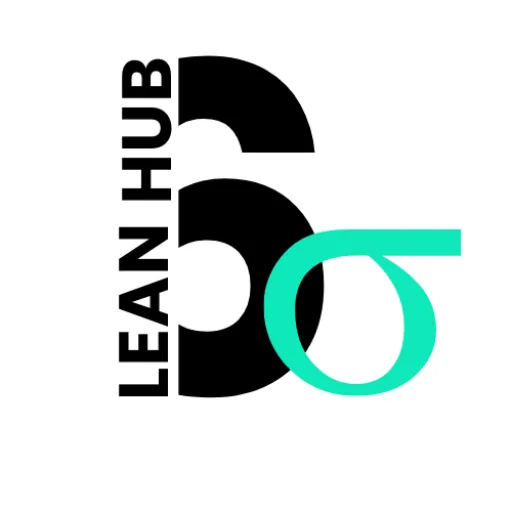Set in Order: Organize for Easy Access
In our fast-paced world, the significance of organization cannot be overstated. It serves as the backbone of productivity, allowing us to navigate our daily tasks with clarity and purpose. When we take the time to organize our surroundings, we create an environment that fosters focus and efficiency.
Disorganization, on the other hand, can lead to confusion, wasted time, and increased stress levels. By prioritizing organization, we not only enhance our personal and professional lives but also cultivate a sense of control over our environments. Moreover, organization extends beyond mere tidiness; it encompasses the systematic arrangement of resources, tasks, and information.
When we are organized, we can easily locate what we need when we need it, which minimizes interruptions and distractions. This streamlined approach allows us to allocate our time and energy more effectively, ultimately leading to improved outcomes in both our work and personal endeavors. As we embrace the importance of organization, we set the stage for greater success and satisfaction in all aspects of our lives.
Key Takeaways
- Organization is crucial for efficiency and productivity in any environment.
- Set in order strategies involve arranging items in a logical and accessible manner.
- Creating a system for easy access helps streamline processes and saves time.
- Utilizing labels and signs can help identify and locate items quickly.
- Maximizing space and efficiency involves optimizing the layout and storage of items.
Strategies for Set in Order
To achieve a well-organized space, we must first implement effective strategies for setting things in order. One of the most fundamental approaches is to categorize items based on their function or purpose. By grouping similar items together, we create a logical flow that makes it easier for us to find what we need.
For instance, in a workspace, we might designate specific areas for office supplies, documents, and equipment. This not only enhances accessibility but also reduces the likelihood of misplacing important items. Another valuable strategy is to establish designated storage solutions that align with our organizational goals.
This could involve investing in shelving units, bins, or drawer organizers that suit our needs.
By providing a specific place for each item, we can ensure that everything has its rightful spot.
Additionally, we should regularly assess our belongings and eliminate anything that no longer serves a purpose.
This practice of decluttering not only simplifies our environment but also reinforces our commitment to maintaining order.
Creating a System for Easy Access
Creating a system for easy access is essential in our quest for organization. We must design our spaces in a way that allows us to retrieve items quickly and efficiently. One effective method is to implement a “first in, first out” approach for items that have expiration dates or are used frequently.
By placing newer items behind older ones, we can ensure that we utilize resources effectively while minimizing waste. Furthermore, we should consider the layout of our spaces when establishing access systems. For example, frequently used tools or supplies should be placed within arm’s reach, while less commonly used items can be stored in less accessible areas.
This thoughtful arrangement not only saves us time but also reduces frustration when searching for specific items. By prioritizing accessibility in our organizational systems, we empower ourselves to work more efficiently and effectively.
Utilizing Labels and Signs
| Metrics | Value |
|---|---|
| Number of labels used in the facility | 150 |
| Percentage of signs with clear and visible text | 95% |
| Number of accidents prevented by utilizing labels and signs | 25 |
| Percentage of employees who find labels and signs helpful | 90% |
Labels and signs play a crucial role in maintaining organization within our spaces. They serve as visual cues that guide us in locating items quickly and efficiently. By labeling storage containers, shelves, and drawers, we create a clear roadmap that eliminates confusion and enhances our ability to find what we need without unnecessary searching.
This simple yet effective practice can significantly reduce the time spent looking for items and increase our overall productivity. In addition to labels, signs can also be used to communicate important information or reminders within our environments. For instance, we might use signs to indicate specific areas for recycling or designate zones for different activities.
These visual aids not only reinforce our organizational systems but also promote a culture of orderliness among those who share the space with us. By utilizing labels and signs effectively, we create an environment that supports our organizational goals and encourages others to participate in maintaining order.
Maximizing Space and Efficiency
Maximizing space and efficiency is a key component of effective organization. In many cases, we find ourselves working with limited space, making it essential to utilize every inch wisely. One approach is to think vertically by incorporating shelving units or wall-mounted storage solutions.
By taking advantage of vertical space, we can free up valuable floor space while keeping our items organized and easily accessible. Additionally, we should consider multi-functional furniture or storage solutions that serve more than one purpose. For example, ottomans with hidden storage compartments or desks with built-in shelves can help us maximize both space and efficiency.
By being creative with our storage solutions, we can create an organized environment that meets our needs without feeling cluttered or cramped.
Maintaining Order and Consistency
Regular Tidying and Reassessment
Regular tidying up and reassessing our spaces is an effective strategy for maintaining organization. This can be done through weekly clean-ups or monthly reviews of our organizational systems. These practices help us stay on track and prevent clutter from accumulating. Moreover, consistency is key when it comes to maintaining order.
Accountability and Responsibility
We should strive to return items to their designated places after each use and encourage others in shared spaces to do the same. By fostering a culture of accountability and responsibility regarding organization, we create an environment where everyone contributes to maintaining order.
Collective Effort
This collective effort not only enhances our individual experiences but also strengthens the overall functionality of the space.
Benefits of an Organized Environment
The benefits of an organized environment extend far beyond mere aesthetics; they encompass improved mental clarity, increased productivity, and reduced stress levels. When we operate within an organized space, we experience less cognitive overload as our minds are free from the distractions of clutter. This clarity allows us to focus on tasks at hand and make better decisions without the burden of disorganization weighing us down.
Additionally, an organized environment fosters a sense of accomplishment and control over our surroundings. As we take pride in maintaining order, we cultivate a positive mindset that can enhance our overall well-being. The efficiency gained from an organized space translates into more time for leisure activities or pursuing personal interests, ultimately leading to a more balanced and fulfilling life.
Tips for Sustaining an Organized Space
Sustaining an organized space requires ongoing commitment and effort from all of us. One practical tip is to adopt the “one in, one out” rule: for every new item we bring into our space, we should consider removing an existing item. This practice helps prevent clutter from accumulating while ensuring that we remain mindful of what we truly need.
Another effective strategy is to establish daily routines that incorporate organization into our lives seamlessly. For instance, dedicating just five minutes at the end of each day to tidy up can make a significant difference over time. By integrating these small habits into our daily lives, we create a sustainable approach to organization that becomes second nature.
In conclusion, the journey toward an organized environment is one that requires intention and dedication from all of us. By understanding the importance of organization and implementing effective strategies for maintaining order, we can create spaces that enhance our productivity and well-being. Through thoughtful planning, consistent effort, and a commitment to sustaining organization over time, we empower ourselves to thrive in both our personal and professional lives.
FAQs
What is the concept of “Set in Order”?
The concept of “Set in Order” is a key principle of the 5S methodology, which focuses on organizing the workplace for efficiency and effectiveness. It involves arranging necessary items in a way that promotes easy access and visual management.
What are the benefits of implementing “Set in Order” in the workplace?
Implementing “Set in Order” in the workplace can lead to improved productivity, reduced waste, enhanced safety, and a more organized and visually appealing work environment. It also helps in reducing the time spent searching for tools and materials.
How can “Set in Order” be applied in different work environments?
“Set in Order” can be applied in various work environments, including manufacturing facilities, offices, healthcare settings, and retail spaces. It involves creating designated storage areas, labeling items, and establishing visual cues for easy identification and access.
What are some key principles to consider when implementing “Set in Order”?
Key principles to consider when implementing “Set in Order” include creating a designated place for everything, using visual management tools such as labels and color coding, and involving employees in the organization and maintenance of the workplace.
How does “Set in Order” contribute to workplace efficiency?
“Set in Order” contributes to workplace efficiency by reducing the time and effort required to locate and access necessary items. It also helps in preventing clutter and confusion, leading to a more streamlined and productive work environment.






